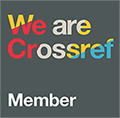Erken Çocukluğa İlişkin Mitler Ölçeği’nin Geliştirilmesi
DOI:
https://doi.org/10.33308/26674874.2023373621Anahtar Kelimeler:
Erken Çocukluk Dönemi- Mitler- Yaygın İnanışlar- Ölçek GeliştirmeÖzet
Bu çalışmada erken çocukluk dönemindeki çocuklarla etkileşim halindeki paydaşların bu döneme ilişkin yaygın inanışlarını ortaya koyan “Erken Çocukluğa İlişkin Mitler Ölçeği’nin geliştirilmesi amaçlanmıştır. Çalışma kapsamında ebeveynlerden, okul öncesi öğretmenlerinden, sınıf öğretmenlerinden ve okul psikolojik danışmanlarından ve ilgili alanlarda öğrenim gören üniversite öğrencilerinden veri toplanmıştır. Bu kapsamda madde havuzunun oluşturulması sürecinde 29 katılımcı ile odak grup görüşmesi, ikinci çalışma grubunda yer alan 297 katılımcıdan elde edilen verilerle açımlayıcı faktör analizi ve üçüncü çalışma grubunda yer alan 198 katılımcıdan elde edilen verilerle doğrulayıcı faktör analizi yapılmıştır. Yapı geçerliği kapsamında açımlayıcı faktör analizi ve doğrulayıcı faktör analizi yapılmıştır. Açımlayıcı faktör analizi sonucunda ölçeğin dört faktörlü bir yapı sergilediği belirlenmiş ve doğrulayıcı faktör analizi ile bu yapı doğrulanmıştır. Güvenirlik hesaplamaları kapsamında Cronbach Alpha ve Omega katsayıları ve test tekrar test yöntemi kullanılmıştır. Ölçeğin psikometrik analizleri erken çocukluk dönemine ilişkin mitlerin değerlendirilebilmesi güvenle kullanılabileceğini göstermektedir.
İndirmeler
Referanslar
Başal, H. A. (2006). Türkiye’de doğum öncesi, doğum ve doğum sonrası çocuk gelişimi ve eğitimine ilişkin gelenek, görenek ve inançlar. Uludağ Üniversitesi Eğitim Fakültesi Dergisi, 19(1), 45-70.
Bentler, P. M., & Bonett, D. G. (1980). Significance tests and goodness of fit in the analysis of covariance structures. Psychological Bulletin, 88, 588–606. https://doi.org/10.1037/0033-2909.88.3.588 DOI: https://doi.org/10.1037/0033-2909.88.3.588
Beyazova, U. (1997). Çocuk sağlığı ve geleneksel yaklaşımlar. B. Onur (Ed.), Çocuk Kültürü, I. Ulusal Çocuk Kültürü Kongresi bildirileri içinde (ss.406-415). Ankara Üniversitesi Çocuk Kültürü Araştırma ve Uygulama Merkezi.
Blake, S., Winsor, D., Burkett, C., & Allen, L. (2011). Developmentally appropriate technology practice: exploring myths and perceptions of early childhood and ınstructional technology professionals. Journal on School Educational Technology, 6(3), 35-48. https://doi.org/10.26634/jsch.6.3.1377 DOI: https://doi.org/10.26634/jsch.6.3.1377
Brunner, M., Nagy, G., & Wilhelm, O. (2012). A tutorial on hierarchically structured constructs. Journal of Personality, 80, 796–846. https://doi.org/10.1111/j.1467-6494.2011.00749.x DOI: https://doi.org/10.1111/j.1467-6494.2011.00749.x
Byrne, B. M. (2010). Structural equation modeling with AMOS: Basic concepts, applications, and programming (2nd Ed.). Routledge/Taylor & Francis Group.
Cassirer, E. (1946). Language and myth. Harper and Brothers, Dover.
Chen, F. F., Hayes, A., Carver, C. S., Laurenceau, J. P., & Zhang, Z. (2012). Modeling general and specific variance in multifaceted constructs: A comparison of the bifactor model to other approaches. Journal of Personality, 80(1), 219-251. https://doi.org/10.1111/j.1467-6494.2011.00739.x DOI: https://doi.org/10.1111/j.1467-6494.2011.00739.x
Cleveland, G., & Krashinsky, M. (2003). Fact and fantasy: Eight myths about early childhood education and care. Childcare Resource and Research Unit, University of Toronto.
Costello, A. B., & Osborne, J. (2005). Best practices in exploratory factor analysis: Four recommendations for getting the most from your analysis. Practical Assessment, Research, and Evaluation, 10(1), 1-9. https://doi.org/10.7275/jyj1-4868
Dereli, F., & Yılmaz, A. (2022). Üstün Yetenekli Çocuk Algı Ölçeği’nin geliştirilmesi. Trakya Eğitim Dergisi, 12(2), 675-692. https://doi.org/10.24315/tred.922724 DOI: https://doi.org/10.24315/tred.922724
Doherty, G. (2001). Targeting early childhood care and education: Myths and realities. Occasional Paper. Childcare Resource and Research Unit, University of Toronto. https://www.childcarecanada.org/sites/default/files/op15full.pdf
Eliade, M. (2003). Dinler tarihine giriş (Çev. Lale Arslan). Kabalcı Yayınevi.
Evers, A., Sijtsma, K., Lucassen, W., & Meijer, R.R. (2010). The Dutch review process for evaluating the quality of psychological tests: History, procedure, and results. International Journal of Testing, 10, 295–317. https://doi.org/10.1080/15305058.2010.518325 DOI: https://doi.org/10.1080/15305058.2010.518325
Fornell, C., & Larcker, D. F. (1981). Evaluating structural equation models with unobservable variables and measurement error. Journal of Marketing Research, 18(1), 39–50. https://doi.org/10.2307/3151312 DOI: https://doi.org/10.1177/002224378101800104
Genesee, F. (2015). Myths about early childhood bilingualism. Canadian Psychology / Psychologie Canadienne, 56(1), 6-15. http://dx.doi.org/10.1037/a0038599 DOI: https://doi.org/10.1037/a0038599
Griethuijsen, R.A.L.F.V., Eijck, M.W.V., Haste, H., den Brok, P.J., Skinner, N.C., Mansour, N., Gencer, A.S., & BouJaoude, S. (2014). Global patterns in students’ views of science and interest in science. Research in Science Education, 45(4), 581–603. https://doi.org/10.1007/s11165-014-9438-6 DOI: https://doi.org/10.1007/s11165-014-9438-6
Hair, J. F., Black, W. C., Babin, B. J., & Anderson, R. E. (2019). Multivariate data analysis (8th ed.). Cengage Learning
Hamm, K., & Herman, J. (2013). The top 10 myths about preschool. Center for American Progress. https://www.americanprogress.org/article/the-top-10-myths-about-preschool/
Hayes, A. F., & Coutts, J. J. (2020). Use omega rather than Cronbach’s alpha for estimating reliability. But…. Communication Methods and Measures, 14(1), 1-24. https://doi.org/10.1080/19312458.2020.1718629 DOI: https://doi.org/10.1080/19312458.2020.1718629
Howard, M. C. (2015). A review of exploratory factor analysis decisions and overview of current practices: What we are doing and how can we improve? International Journal of Human-Computer Interaction, 32(1), 51–62. https://doi.org/10.1080/10447318.2015.1087664 DOI: https://doi.org/10.1080/10447318.2015.1087664
Hupp, S., & Jewell, J. (2015). Great myths of child development. Wiley Blackwell.
Kızıldağ Şahin, S., & Koçtürk, N. (2021). Ebeveynlerin çocukluk dönemi cinsel istismarına ilişkin mitleri. Turkish Studies-Social Sciences, 16(3), 1223-1239. https://dx.doi.org/10.47356/TurkishStudies.46751 DOI: https://doi.org/10.47356/TurkishStudies.46751
Kim, E. J., Yeon, H. J., Lee, Y. K., & Lee, Y. O. (2015). A study of view on child rearing in Korean myths: focusing on Shamanism. Procedia-Social and Behavioral Sciences, 174, 1771-1776. https://doi.org/10.1016/j.sbspro.2015.01.836 DOI: https://doi.org/10.1016/j.sbspro.2015.01.836
Koyun, A., Çamuroğlu, C., Korkmaz, G., Menteşe, N., & Ocak, F. (2010). Kadınların gebelik, doğum ve yenidoğan bakımına ilişkin geleneksel inanç ve uygulamaları. Sosyal Politika Çalışmaları Dergisi, 22(22), 57-64.
Patton, M. Q. (2002). Qualitative research and evaluation methods. Sage Publications.
Plowman, L., & McPake, J. (2013). Seven myths about young children and technology. Childhood Education, 89(1), 27-33. https://doi.org/10.1080/00094056.2013.757490 DOI: https://doi.org/10.1080/00094056.2013.757490
Samlı, G., Kara, B., Ünalan, P. C., Samlı, B., Sarper, N., & Gökalp, A. (2006). Annelerin emzirme ve süt çocuğu beslenmesi konusundaki bilgi, inanış ve uygulamaları: Niteliksel bir araştırma. Marmara Medical Journal, 19(1), 13-20.
Schermelleh-Engel, K., Moosbrugger, H., & Müller, H. (2003). Evaluating the fit of structural equation models: Tests of significance and descriptive goodness-of-fit measures. Methods of Psychological Research Online, 8(2), 23-74.
Sevinç, N., & Kanlı, E. (2019). Teachers’ myths and views about creativity. Journal of Gifted Education and Creativity, 6(2), 103-122.
Smith, T.D., & McMillan, B.F. (2001). A primer of model fit indices in structural equation modeling. Paper presented at the annual meeting of the Southwest Educational Research Association, New Orleans, LA. https://files.eric.ed.gov/fulltext/ED449231.pdf
Sürücü, L., & Maslakçı, A. (2020). Validity and reliability in quantitative research. Business & Management Studies: An International Journal, 8(3), 2694-2726. https://doi.org/10.15295/bmij.v8i3.1540 DOI: https://doi.org/10.15295/bmij.v8i3.1540
Şahin, H., Ongan, D., İnanç, N., Başer, M., & Mucuk, S. (2009). Gebelerin inanışları: besin seçimi bebeğin cinsiyetini ve fiziksel özelliklerini etkiler mi? Sosyal Politika Çalışmaları Dergisi, 19(19), 41-52. https://doi.org/10.21560/spcd.14369
Tabachnick, B. G., & Fidell, L. S. (2007). Using multivariate statistics (5th Ed.). Pearson, Allyn & Bacon
Tokur Kesgin, M., & Özcebe, H. (2004). Türkiye'de çocuk bakımındaki geleneksel inanç ve uygulamalar. Hacettepe Üniversitesi Türkiyat Araştırmaları (HÜTAD), 1, 43-56.
Tsantis, L. A., Bewick, C. J., & Thouvenelle, S. (2003, November). Examining some common myths about computer use in the early years. Beyond the Journal Young Children Young Children on the Web. http://asbellapresents.pbworks.com/f/CommonTechnoMyths.pdf
Williams, J. (2007). How social myths about childhood, motherhood and medicine affect the detection of subtle developmental problems in young children. Contemporary Nurse, 23(2), 274-287, https://doi.org/10.5172/conu.2006.23.2.274 DOI: https://doi.org/10.5172/conu.2006.23.2.274
Yalçın, H. (2012). Gebelik, doğum, lohusalık ve bebek bakımına ilişkin geleneksel uygulamalar (Karaman örneği). Çocuk Sağlığı ve Hastalıkları Dergisi, 55(1), 19-31.
İndir
Yayınlanmış
Nasıl Atıf Yapılır
Sayı
Bölüm
Lisans
Telif Hakkı (c) 2023 Yaşadıkça Eğitim

Bu çalışma Creative Commons Attribution-NonCommercial-NoDerivatives 4.0 International License ile lisanslanmıştır.
Sisteme yüklemiş olunan makalenin kapsamı, sunduğu bulgular ve sonucu ve yorumları konusunda Yaşadıkça Eğitim [YE] dergisi Sahibi, Editör, Editör Yardımcısı, Hakemler ve Editör Kurulu'nun hiçbir sorumluluk taşımadığını kabul ederim.
Makalenin özgün olduğunu, herhangi bir başka dergiye yayımlanmak üzere gönderilmediği, daha önce yayımlanmadığını Yaşadıkça Eğitim [YE] dergisi Editörlüğü'ne beyan ederim.
Başlığı belirtilen makalenin, 5846 sayılı Fikir ve Sanat Eserleri Yasasının 22. maddesi gereğince çoğaltma, 23. maddesi gereğince yayma ve 25. maddesi gereğince her türlü taşıyıcı materyal üzerinde veya elektronik ortamda kamuya iletim haklarını Yaşadıkça Eğitim [YE] dergisine karşılıksız, koşulsuz ve süresiz olarak devredildiği, makale ile ilgili devredilen hakların dilediği zaman, mekan ve koşullarda kullanmaya Yaşadıkça Eğitim [YE] dergisinin yayıncısı olarak İstanbul Kültür Üniversitesi'nin yetkili kılınacağını onaylarım.





